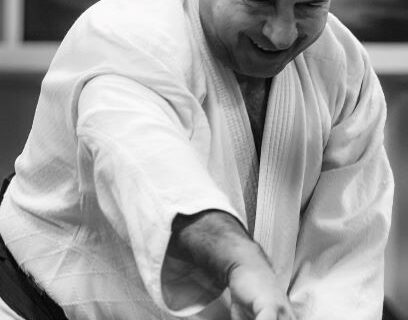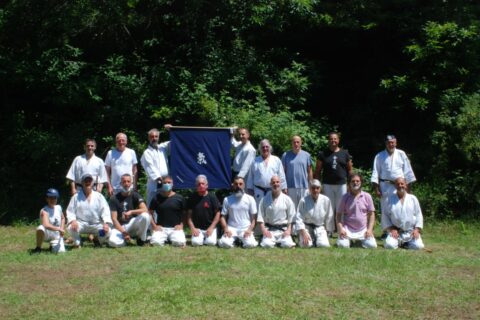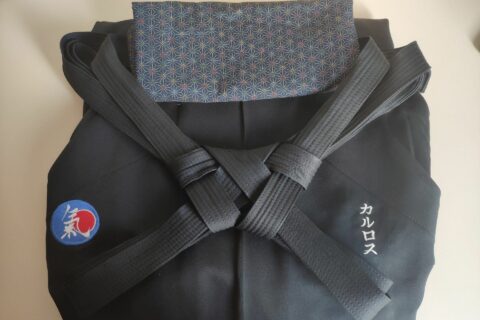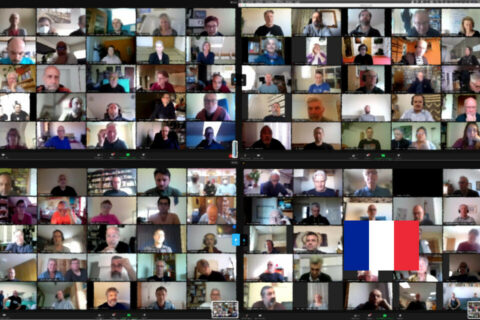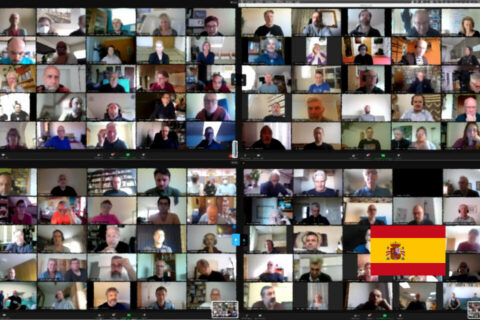Smiling, creative and free. Able to create from the first glance a relaxed and pleasant atmosphere with his interlocutor. To put it simply, a true Aikido Master. Gianni Gioconto Shihan, who spent more than fifty years of his life on the tatami, agreed to answer our questions on four specific topics.
Before we even start we wanted to express our personal appreciation for him and our gratitude for his availability.
Thanks to Francesco Ingemi for his advice and the pictures we used in this article.
UKEMI
Beppe used to say that Sensei Yoshigasaki always talked about you as the “better ukemi” and watching some old videos published online by master Maule about your Aikikai time, your great athletic ability was undeniable but I doubt that Sensei was talking just about that. Then my question is: Did you find any differences in the approach of Ukemi by Sensei Tohei and Sensei Yoshigasaki when you joined Ki No Kenkyukai ? And furthermore what are, in your competent opinion, the qualities of good Ukemi?
To do Ukemi of course a good athletic foundation is mandatory, but it’s not the element that makes the real difference. The attitude to improve it’s pivotal, it’s required a sort of generosity toward the practice in it’s whole, which means that it’s not important to show one’s own skills as Uke, but what’s most important is the chance to develop the art that we are practicing. It’s necessary some commitment to highlight and value the interaction with Nage, beyond our own personal performance.
When we succeed in giving less evidence to ourselves in order to leave room for the expression of the beauty of the “whole”, well that’s when we’re doing a good Ukemi for sure.
Then there was a significant passage that I’ve experienced moving from Aikikai to Ki No Kenkyukai. Practicing with Sensei Tohei and with Sensei Yoshigasaki, I realized that what I did was not enough and even though I was already considered a good Uke, in a way I had to start learning over again. I had to work hard to become a “real” Uke. I mean “real” in the sense of “true”, which means not just a Uke who could be thrown at command. Sensei Tohei before and especially Sensei Tohei after, using practical examples, worked a lot on this topic.
Often, the risk of doing Ukemi is to transform the practice into a sort of theatrical performance where the attacker has a detailed script for her role which she tries to represent at her best, but there’s nothing more than that. So we don’t grow but instead we stay caged in a pre-established form. The art cannot develop itself. Then time goes by, and little by little the needed physical ability is lost and in the end, very often, we stop practicing.
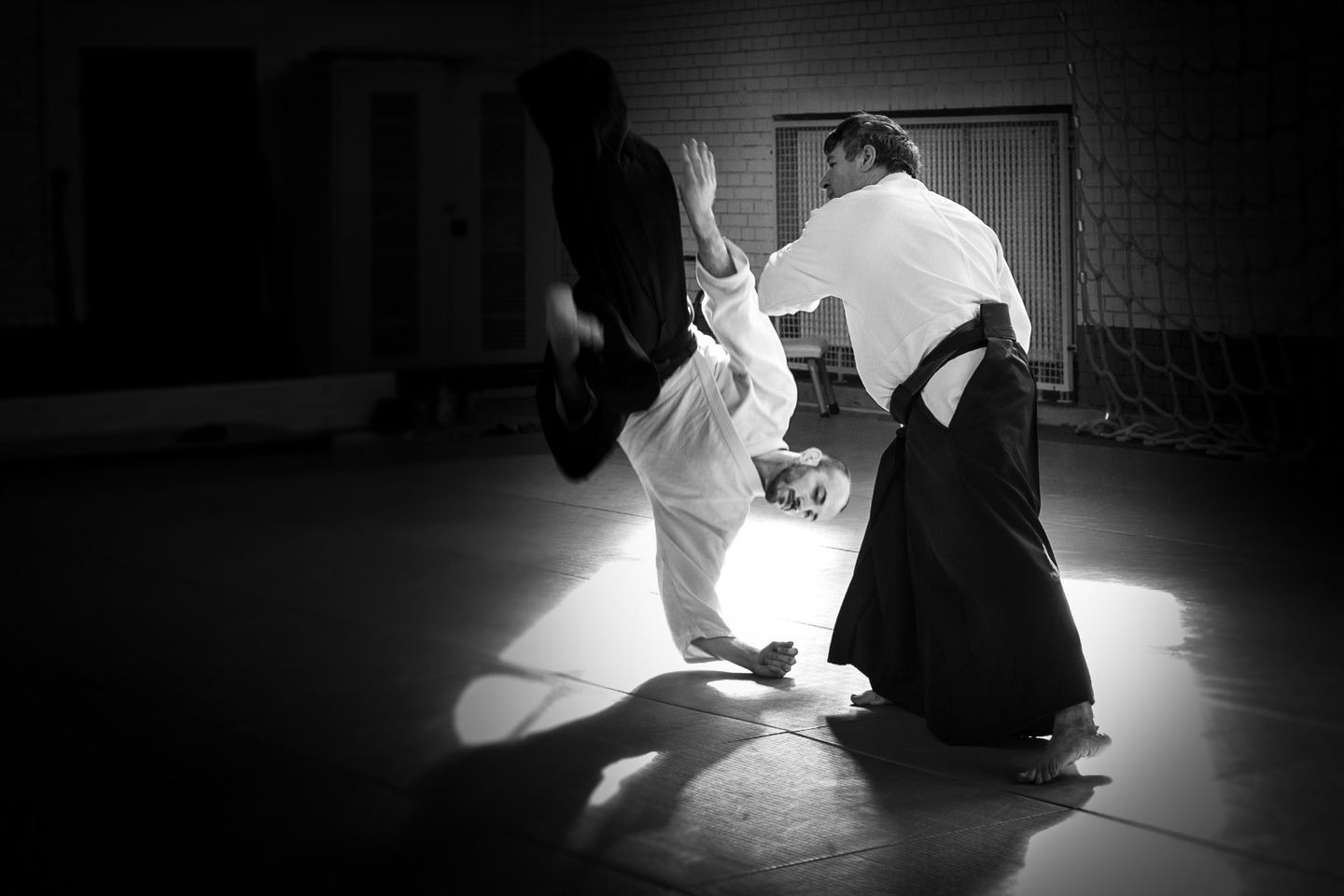
When we succeed in giving less evidence to ourselves in order to leave room for the expression of the beauty of the “whole”, well that’s when we’re doing a good Ukemi for sure.
You see, in Ki Aikido there are a lot of people with more or less fifty years of practice on their back. As far as I know this isn’t happening in other schools. When you see someone with thirty years of practice, you’re looking at an exception who maybe is already a big master. On the other side inside Ki Aikido is quite easy to find people with that kind of experience. That’s why our degrees have become so high. Something this frequency in high dan degrees has been criticized but after all, with all these years of practice I find it quite normal that Sensei assigns them.
Coming back to the beginning of your question, I think that the athletic dimension is without any doubt secondary respect to the one of “reality”. This is a lesson that I’ve learned in the Ki No Kenkyukai.
Surely you had the chance to see Sensei Yoshigasaki doing Ukemi…
Many times! When Sensei Tohei had to show “officially” a Tsuzukiwaza the chosen Uke was always Sensei Yoshigasaki. He was one of a kind, a true, straightforward, no frills Ukemi. There was nothing more than what was needed to correctly express the moment of the technique. Without any doubt a proper Uke. I’ve learned a lot watching him.
BUKI – WAZA
As years went by, you, like other Shihans, dedicated to the creation of alternative forms with weapons, compared to those canonized inside the Tsuzukiwaza. That’s a creative process that requires experience and some sort of courage, which I personally envy a lot. How did you develop your forms? (for example, did you just take inspiration by Ki Aikido kata or there’s some more?) And what’s the purpose for them?
Honestly I didn’t take inspiration from the existing Tsuzukiwaza, even though the movements with weapons are the same: Yokomenuchi, Shomenuchi, Tsuki… so it’s obvious that those will remain. The initial purpose was to make it easier to understand the foundational movements. For example let’s examine Tsuki. Training just Tsuki, without any propaedeutic exercise, I realized that most of my students were just swinging the Jo in the air, without a real understanding or depth in the movement. The movement was there, but a clear purpose was absent (without Ki, we could say Ed.). Little by little I started to identify exercises which could be useful to develop the depth of the act. I gathered those exercises together in a harmonious way and so some Tsuzukiwaza with weapons were born.
This sequence, before having any Tsukiwaza dignity, usually underwent several trials and tests. When my students accepted them not as an enforcement but as something useful, then it was perfect.
For example, I made a Tsuzukiwaza with Jo that was born by itself. I started putting together all the movements with the Jo: Yokomenuchi, Shomenuchi, Tsuki, Ushiro-Tsuki, the upward attack and the circular cut. I ordered them in a logic sequence of 12 techniques which allowed to quickly practice all the fundamental movements. I added to the sequence the chance to deal with more Ukemi and so was born a Tsuzukiwaza with four or eight partners. I didn’t start with the specific intention to create something like that, it came by itself.
Sensei Yoshigasaki never came to inhibit such initiatives so I can say that they are not harmful and that I can continue this way.
I’ll take the chance to ask you something I always wondered about, in Ki Aikido we study Jo with Jo, but those are movements derived or linked to the movements of Bo, while in the Aikikai they practice Kumi-Jo forms where weapons move both in the logic of the short staff. Why in Ki Aikido we don’t have any sequence of that kind?
Staff versus staff is a kind of practice that in Japan never had real dignity as a martial art, it was always considered like a child play or anyway a kind of fighting not suitable for a Samurai. So it was not very developed. Sensei Saito used the staff a lot, but more like Suburi or like Kumi Jo than like Tsuzukiwaza. The practice consists in repetition of the individual exercises or in the practice of forms with a partner separated the one from the other, so it was not a sequence based on a logic of changing or passing from a situation to another like ours Tsuzukiwaza.
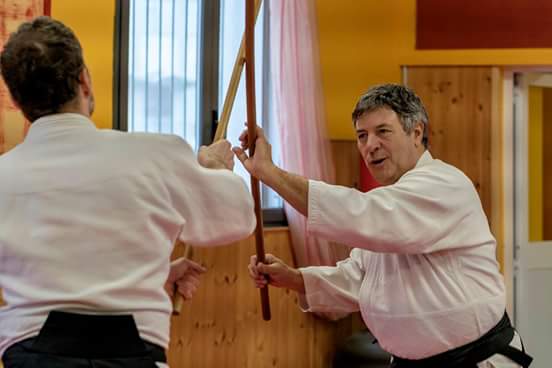
Little by little I started to identify exercises which could be useful to develop the depth of the act. I gathered those exercises together in a harmonious way and so some Tsuzukiwaza with weapons were born.
One element I’ve always been fascinated by in Saito school are those techniques where Nage uses Jo to throw the other, in very different way than our Jo Nage where the Jo is grabbed by Ukemi, but instead he uses it for example putting it inside the elbow of Uke to lead him… that’s another practice I’ve never seen in Ki Aikido.
Before we moved to Ki No Kenkyukai, both me and other older Shihan, we all practiced those kinds of forms and personally sometimes I still use them. Clearly it’s more like playing than a real practice. But sometimes, if they’re used with wisdom and intelligence, they are didactically useful to deliver some information. Obviously in order to put them into a lesson it’s required some knowledge and personal experience.
AIKIDO IN REAL LIFE
You’re not just an Aikido Master, but also an entrepreneur and, as years went by, you managed, with great sacrifice I guess, to successfully carry on both. Sensei Tohei spoke about Ki in Daily Life and Sensei Yoshigasaki spoke about Aikido in Real Life. What did the practice give to you in your work life outside of the tatami?
I would say that there was a fair exchange between one activity to the other. Each one of them gave me something to do better in the other one. For example, I think that in time, Aikido practice improved my ability to communicate and to relate with customers. On the other hand I think that approaching the teaching of a martial art “as an entrepreneur” gives a very useful serenity. You know what it means to manage an organization, having a project to develop and communicating it, supporting the people around you. And then creating a long lasting relationship between the Dojos of your group, based on mutual respect. All these elements are something that an entrepreneur has to learn.
Ki Aikido teaches something equally important for an entrepreneur, which is that you cannot always win. So, it’s necessary to prepare the best we can even for the more unfortunate circumstances. In other words, you have to create the condition inside yourself to say “Ok, I’ll do everything that I can”. After all, things change constantly and quickly, as we saw during this year!
THE FUTURE
The Pandemic and the sanitary emergency, regardless of the light we’re starting to see at the end of the tunnel, represented a turning point for many things. How do you see the future of Ki Aikido, after COVID?
I think that we will need to come back to the roots, which are the lessons in presence. Every opportunity we were given by technology are for sure excellent palliatives, useful to stimulate and keep alive the interest but they cannot substitute the lessons in presence.
They were useful to keep relationships and I think it’s positive that the instructors stay connected with these tools to develop initiatives and to start their work looking after the re-openings.
As far as I’m concerned, together with Maurizio Volpe, we’re planning some open air lessons for the beginning of new year. At the beginning of the emergency I was afraid of a bigger loss of interest, but what I see and listen from many groups is the opposite. We just have to be patient and see what’s going to happen when we will be able to start again, I’m Hopeful!
